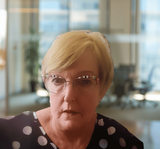Marfan Syndrome and Me: I had Height Reduction Surgery 2
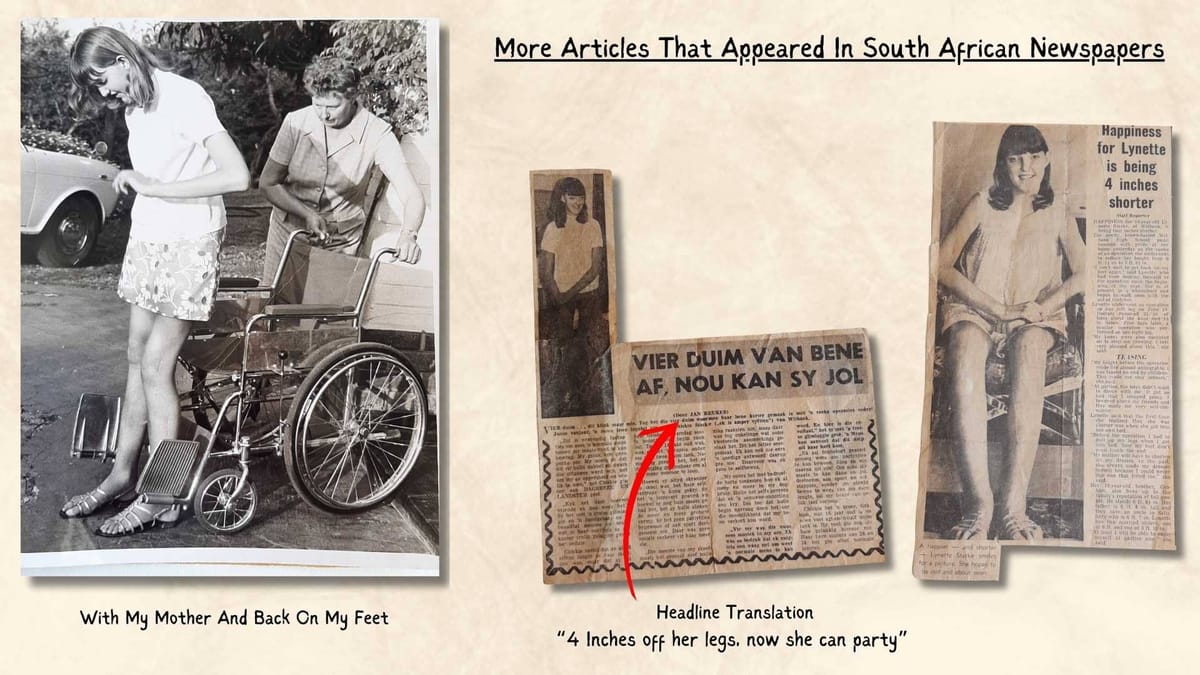
Up and Running (well almost)
After frequent visits to the orthopaedic surgeon, the day came about 4 months after the surgeries, when in his consulting rooms, he announced that I could start walking with the aid of crutches.
Read Part 1 below:
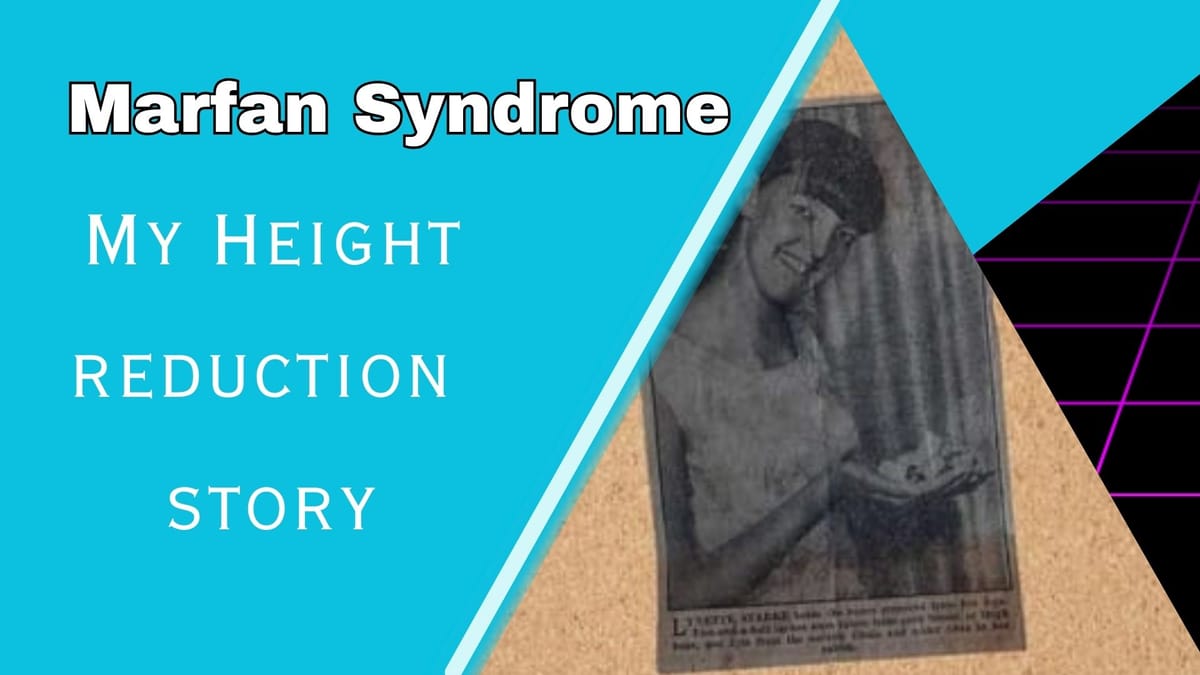
Within a few days, I had mastered the art of walking around the house on crutches, and after only a few weeks, I felt confident enough to replace the crutches with walking sticks. The freedom was exhilarating, and by December, I discarded all aids, though my balance remained unsteady and my left foot turned inward no matter how hard I tried. Not wanting to disappoint, I stayed silent, hoping it would correct itself. I looked forward to our coastal holiday where I could swim and further strengthen my muscles in readiness for the next chapter.
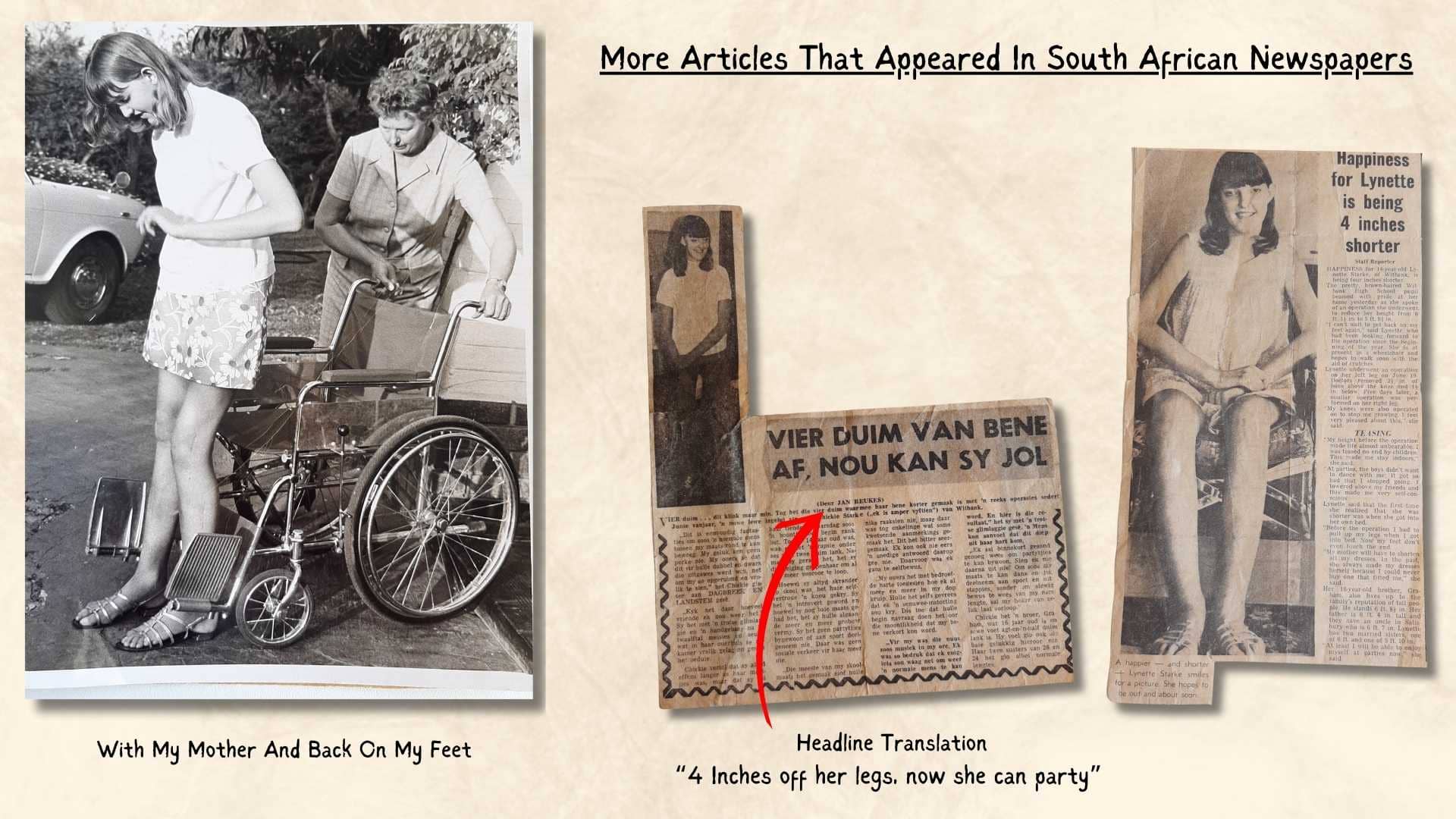
Without walking aids, I could walk fairly well and everybody was thrilled with my progress. I swam as often as possible, and although I had a secret concern, life was great. After an enjoyable holiday at the coast, our lives reverted to normal and I returned to school in January 1970.

Back to School
The heavy school shoes posed an immediate obstacle after wearing only summer sandals. The extra weight made my left foot uncontrollable; I had to concentrate intently on each step to keep it straight. Within weeks, my left knee began swelling and aching. Despite medication, by the July holidays, I required another knee surgery. That joint never fully recovered, swelling whenever I walked far or stood too long. When my father retired that year, we relocated to KZN's south coast where I finished my schooling.
There is no doubt that many aspects of my life were better. The teasing stopped and that fact, alone was perhaps the most meaningful of all the benefits the surgery provided, and it helped to grow my confidence. I blended in - something I never imagined possible before. For that alone, I will be forever grateful to the surgeon who believed he could improve the quality of my life.
New Challenges
The downside was that I continued to have a painful, swollen knee, and had to focus on keeping my left foot from turning inward with every step – this was the cause of my worsening knee pain. However, I went to Business College, got married and had my first baby. By then, the pain was unbearable.
I consulted a surgeon who agreed to straighten the by-now bow leg. He was concerned about having to remove the intramedullary nail from my tibia, which by this time had been in place for 11 years. I woke from the anaesthetic to learn that in the process of trying to extract the nail, my ankle had been badly broken, so my leg had not been straightened.
At that time our baby son was 12-months-old, and as you can imagine, it was very challenging to be on crutches and in a plaster cast for three months trying to catch a baby in motion. I took him out into the garden once daily, but always in a toddler-harness, so he could not escape. Once I had fully recovered, the initial operation to straighten my lower leg was performed, and there was a distinct cosmetic improvement. However, I was still pigeon-toed which placed additional strain on the inside of my painful knee.
By this time I was 30 years old and also wearing a back brace for support. Pain and muscle spasms in my lower back had begun during my first pregnancy due to my scoliosis (spinal curvature). Imagine having two young sons and being in constant pain with either back or knee pain, or both. The only time my pain was tolerable was when I was sitting or lying down. I could not stand for any length of time without being in excruciating pain, and the joint was almost the size of a football. Surgeons had been telling me for years that I was far too young to have a knee replacement. By this time, no cartilage was left in the joint, so the bones were rubbing against one another. Depression set in and I was placed on medication. Life became a blur of pain, and activities that were once a joy became a chore.
Eventually, at age 36, in desperation I had my first knee replacement. Once home, and despite my daily exercise routine and visits to the surgeon, the knee remained swollen and irritable for months, after which I was required to have various procedures that revealed the dreaded word - infection. Would it ever end? So, about a year later I had the joint removed altogether while antibiotics were inserted into the vacant joint space. Once again I spent a few months in a plaster cast until the fluid extracted from the joint was infection-free. So, after the delay with my first joint replacement, by age 37, I had undergone a second replacement! I put my trust in a well-known, superb knee surgeon in Cape Town, and that knee is still doing well, 31 years later. I owe so much to that amazing man.
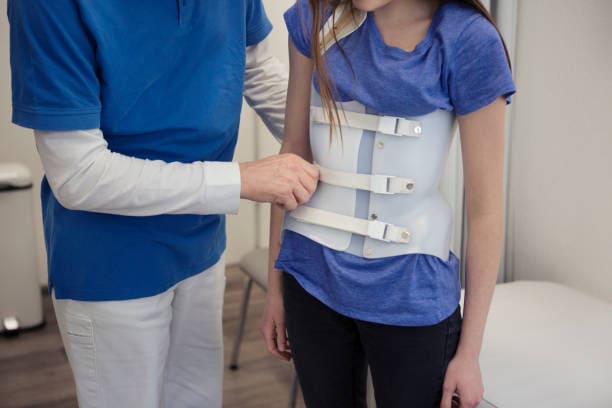
Spinal Fusion
Back pain and debilitating muscle spasms were a constant. I sourced a simple, but effective home traction unit, and my GP would come and give me pain relief injections at home. Back surgery was delayed until absolutely necessary. In 2001, I had a lumbar and cervical fusion at the same time - major surgery, and I could do little for myself. The good news is that it was successful, and the results significantly improved my life and pain levels. Hooray!
Back on the Operating Table.....
In 2008, I began to experience severe pain in my good knee. It went from being painless one day to excruciating within a few days, and the knee was badly swollen. I’d had some bone loss and the intramedullary nail in my tibia was slightly exposed and pushing into the bone above. I required a knee replacement, but..... I first had to undergo 2 separate operations to remove the intramedullary nails from my tibia, and femur, as well as all the large staples from that knee before knee replacement surgery could be performed. All this metal had now been in my bones for 39 years, and involved two major surgeries to remove it all. Sigh... Once I had fully recovered from those operations, I had my right knee replaced in December 2009. It was a huge relief to be rid of those large metal nails and staples that had caused me so much additional trauma.
Oh dear...
Although unrelated to Marfan Syndrome, I was diagnosed with breast cancer in 2015 – just another issue to have to deal with. At the time I had Hormone Replacement Therapy (HRT), as I believed it could protect my vulnerable bones and joints. Fortunately, I was having regular mammograms so the cancer was detected very early. The affected area was surgically removed, followed by 42 sessions of radiation. I recovered well, but I was later diagnosed with multiple blood clots in both my lungs. It is unknown whether the radiation was the cause, although I believe it was.
Not too long after my breast cancer ordeal, I began to experience severe pain in my hip, that worsened in a short space of time. I saw a surgeon who confirmed that I required a hip replacement, as the joint was badly arthritic. I was so accustomed to hospitals and operating theatres by this time, that I took it all in my stride. A hip replacement is so much easier and quicker than a knee replacement, and I had the surgery during my annual three-week leave. I returned to work in time, and I was even able to climb the stairs to where my office was situated. Two years later, the other hip was replaced – now I felt like a real bionic woman!
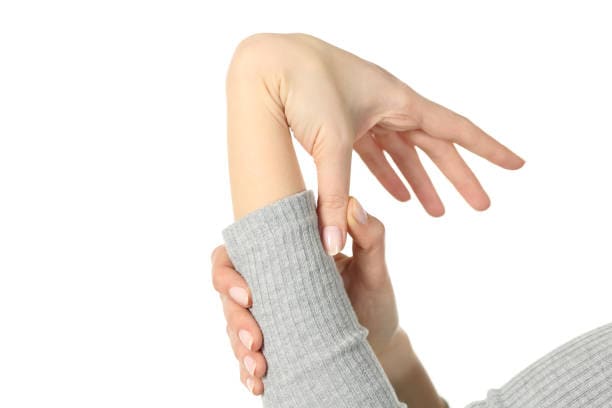
Living With Marfan Syndrome after all the Surgeries
Adjusting to prosthetic knees and hips took time; a few bad falls occurred initially. Years later, unless aware of my surgical history, you likely would not notice anything different about me. I've grown accustomed to walking with bent arms, their length going unnoticed unless pointed out.
It is now 23 years since my spinal fusion operations, and my thoracic spine has curved and weakened, making my spine curve to the right. I use inserts in my right shoe to even out the length of my legs.
The instep on my left foot has collapsed inward, appearing strange yet only causing pain with excessive walking. Further surgery isn't an option unless an emergency arises. I'm immensely grateful that nutrition and overall wellness have been my passions for 25 years. I attribute my current state to first embracing the "food pharmacy" – choosing anti-inflammatory foods that keep me as pain-free as possible. This drive led me to blogging about health. I'm continually shocked and surprised how some health industry websites overlook diet's influence on physical and mental conditions. I desire to help others elevate their quality of life as I have, by making wiser food choices before taking medication. I have nothing against vital medication, and take it daily for chronic conditions that I cannot fix.
Not every surgery stemmed directly from the height reduction, but except for breast cancer, most related to that initial procedure combined with the effects of Marfan Syndrome.
Would I recommend Height-Reduction Surgery?
Am I sorry I had the height reduction surgery? No. It solved a major life issue, and without the surgery, my path would almost certainly have been very different. Had I grown to 6'6" or more, I may have followed an academic path or possibly even become a social hermit.
Instead, I experienced typical milestones – marriage, and two sons (6'7" and 6'2"). Interestingly, the males in my family had fewer Marfan-related troubles despite being taller than average. Today, protocols seem to involve removing intramedullary nails and hardware post-healing. My surgery would most likely have lost its appeal if that had been suggested.
Without pursuing my curiosity about nutrition and wellness since 1998, and reading extensively on the subjects, I would not be as pain-free today. Making those diet and lifestyle changes reversed my previously poor physical and mental health. Now aged 69, I live a fairly sedentary yet fulfilled, happy, grateful life, despite the inability to walk long distances.
Do you have Marfan Syndrome? I'd love to hear from you in the comments!

